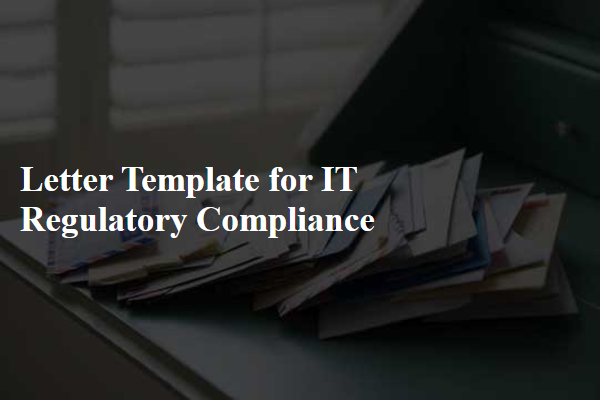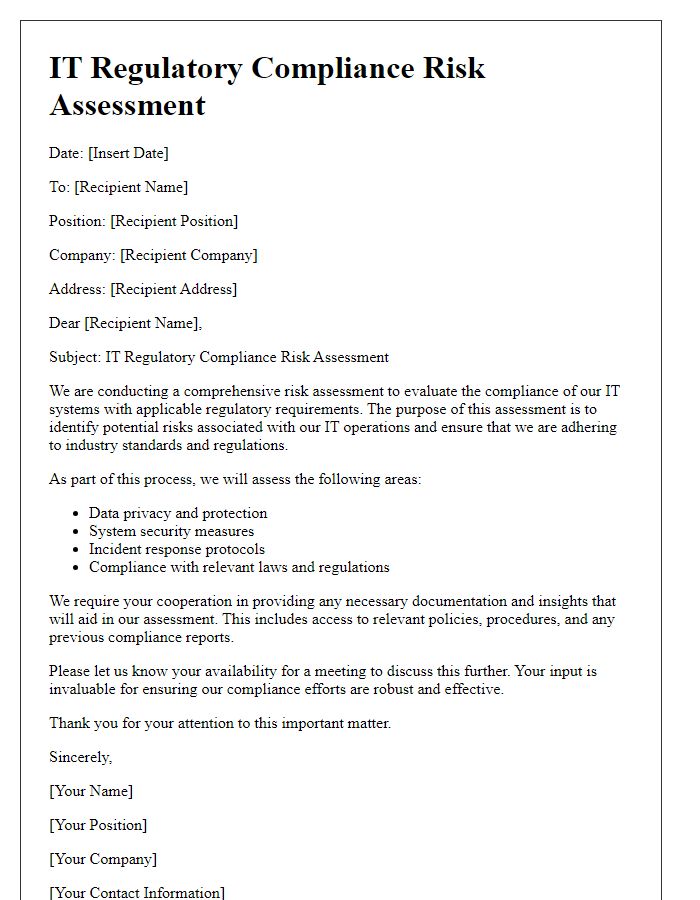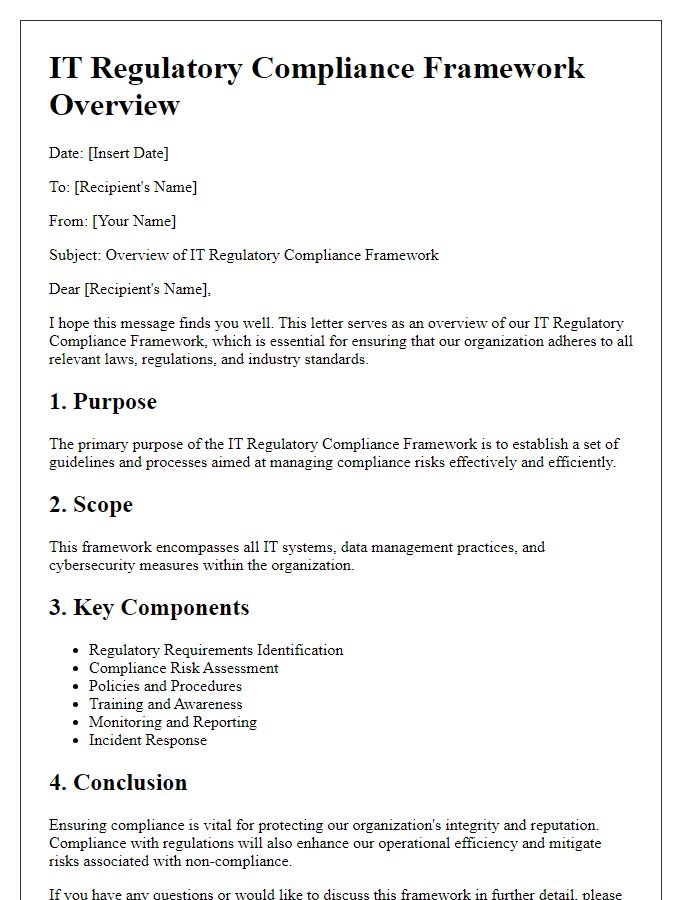In today's fast-paced digital landscape, ensuring IT regulatory compliance is more important than ever. With constantly evolving regulations and standards, organizations must stay ahead to protect their data and maintain trust with stakeholders. Whether you're a small startup or a large corporation, navigating the intricacies of compliance can be daunting, but it doesn't have to be. So, let's dive into the essential elements of an IT regulatory compliance letter that can guide you through this crucial processâread on to discover more!

Clear identification of regulatory framework and standards
Understanding IT regulatory compliance requires clear identification of various frameworks and standards, including the General Data Protection Regulation (GDPR) enforced across the European Union, which mandates stringent data privacy and protection measures for entities handling personal information. The Health Insurance Portability and Accountability Act (HIPAA) governs the security and privacy of health data in the United States, imposing rules on healthcare providers and associated entities. The Payment Card Industry Data Security Standard (PCI DSS) sets requirements for securing credit card transactions and protecting cardholder information. Additionally, the Federal Information Security Management Act (FISMA) outlines a framework for securing federal information systems. Each of these regulatory mandates guides organizations in establishing comprehensive compliance programs tailored to their operational requirements while safeguarding sensitive information from breaches and unauthorized access.
Assessment and documentation of compliance measures
Assessment of IT regulatory compliance involves a comprehensive evaluation of an organization's adherence to frameworks like ISO 27001 (Information Security Management), GDPR (General Data Protection Regulation), and HIPAA (Health Insurance Portability and Accountability Act). Documentation must include detailed reports on risk management processes, security control implementations, and incident response plans. A thorough gap analysis should identify deficiencies in current practices versus regulatory requirements, typically conducted annually or biannually. Additionally, maintaining an audit trail through logs and compliance checklists ensures accountability. Regular employee training sessions, emphasizing the importance of compliance, should be documented alongside test results to reinforce understanding and adherence to policies.
Detail on data protection and privacy protocols
Data protection and privacy protocols serve as critical measures for organizations handling sensitive information. Compliance with regulations like the General Data Protection Regulation (GDPR) enacted by the European Union in May 2018 requires the safeguarding of personal data, ensuring transparency in data processing activities. Privacy frameworks outline procedures for data collection, storage, processing, and sharing, which must adhere to principles of legality, fairness, and transparency. Organizations must implement measures such as data encryption for sensitive datasets, regularly conduct risk assessments, and establish protocols for data breach notifications within a strict 72-hour window, as mandated by GDPR. Additionally, maintaining accurate records of data processing activities and providing users with the right to access, rectify, or erase their data fosters trust and compliance with privacy expectations in various jurisdictions.
IT risk management and mitigation strategies
IT regulatory compliance requires comprehensive risk management and effective mitigation strategies. Organizations must identify and assess potential risks, such as data breaches and system failures, which can lead to significant financial losses and reputational damage. Implementing a robust framework, like the NIST Cybersecurity Framework, supports organizations in categorizing risks based on their likelihood and impact. Additionally, regular audits and assessments ensure compliance with regulations, such as GDPR and HIPAA, which govern data protection practices. Employee training programs are essential in promoting awareness of security protocols and best practices, reducing the potential for human errors. Organizations often deploy advanced security measures, including encryption and multi-factor authentication, to safeguard sensitive information. Continuous monitoring of systems allows for the timely detection of vulnerabilities and threats, ensuring a proactive approach to IT risk management.
Contact information for compliance officer or department
Compliance officers (individuals responsible for ensuring adherence to regulations) play a crucial role in IT regulatory compliance, especially in organizations managing sensitive data. The contact information for the compliance department should include the officer's name, position (such as Chief Compliance Officer), office telephone number (frequently including area codes), email address (often formatted with the organization's domain), and physical office location (such as building number and floor). In larger organizations, specifications may include the team name and specific extensions for direct communication. Clarity in communication channels fosters adherence to compliance standards, ensuring prompt responses to inquiries regarding data protection laws such as GDPR or HIPAA.













Comments